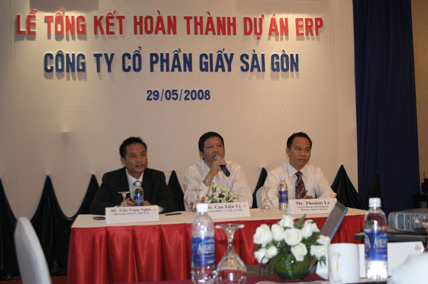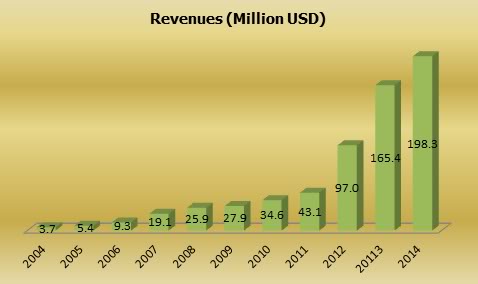State of the pulp industry
Market News
Despite growing demand for market pulp, it will take several years for it to catch up with major supply increases coming on stream before year-end.
Overcapacity remains a major factor in the global outlook for pulp and paper in 2017. Indeed, by the end of the year, global market pulp production will be at an unprecedented all-time high in human history.
“APP [Asia Pulp & Paper] has built a huge mill in Oki, Indonesia with a total capacity of 2.8 million tonnes of hardwood pulp a year,” explains Brian McClay, principle at Montreal, Que.-based Brian McClay & Associates market intelligence consulting firm. “Compare that to the largest pulp mill in Canada having a capacity of about 650,000 tonnes. One of the two Oki plant lines began operation in December, and the second is expected to come online in August.”
McClay adds that by the fall, Metsä-fibre will start a 1.3 million t/y NBHK/ BHK (Non-Bleached/Bleached hardwood Kraft Pulp) mill in Finland and Fibria will have a 2 million t/y BEK (eucalyptus) mill running in Brazil. All of this builds on last year’s startup of four new or rebuilt softwood market pulp lines in the U.S., Brazil and Sweden, which McClay says totals 1.4 million tonnes of new capacity.
Yes, demand for pulp is also growing, but without any capacity decreases, McClay says it will still take three years to catch up with supply. “Global pulp demand increased 4 per cent in 2016 on the back of accelerating consumption of tissue and packaging paper, offsetting declining demand for printing and writing grades,” he observes. World demand for all tissue paper increased almost 4 per cent last year with growth in premium and ultra-premium grades — the ones that use 100 per cent market pulp — higher than that. McClay says bathroom tissue is the biggest growth area, with China using so much more of it than before, along with its growing demand for other items such as paper towels, wipes, facial tissue, and diapers.
“Demand is also strong in some other emerging markets like Indonesia, Vietnam, Turkey and Mexico and these products all use virgin fibre,” McClay notes. “It’s more than compensating for the reduced demand for printing and writing grade pulp.”
Arnaud Franco agrees that it’s only a matter of time until pulp demand is on par with what’s about to be produced globally. “While significant capacity expansions are expected over the next two years, long-term demand is expected to catch up,” confirms the director and senior analyst in the Pulp & Printing & Writing division, Pulp and Paper Products Council, in Montreal. However, Franco adds that there are many large projects which are not yet included in his capacity figures, which “may widen the capacity gap farther down the road.”
Packaging and e-commerce
In addition to increased demand for tissue products, McClay says there is also a strong and growing global demand for bleached chemi-thermo-mechanical pulp (BCTMP) used to make coated cartonboard for high-end product packaging. Two-thirds of the demand is from China, where the middle-class continues to grow, and McClay says this is great news for Canadian pulp mills owned by companies like Tembec, West Fraser, Resolute Forest Products and Canfor. Franco believes Chinese demand for chemical market pulp is likely to grow about 5 per cent per year over the next five years.
Asian demand is also strong for Old Corrugated Cardboard (OCC), according to International Paper’s Q1 2017 report, which refers to OCC as “a significant headwind.” In December 2016, the com- pany expanded significantly into pulp, acquiring Weyerhaeuser’s pulp business for $2.2 billion. The deal included five pulp mills and two converting facilities that produce fluff pulp, softwood pulp and specialty pulp products for diapers, tissue, textiles and so on.
Global pulp demand is also receiving a boost because paper recycling is about to peak, with developed economies in North America, Europe and Japan consuming less printed paper than in the past. Franco explains however, that the same factors which have depressed demand in the mature markets — electronic communications supplanting paper-based communications, and the rise of digital advertising, for example — are also affecting emerging markets enough to offset gains from a rising middle-class which consumes more print. “Certain sectors such as office paper are more insulated,” he says, “but still face challenges.”
McClay echoes the sentiment, noting that “recovered paper’s share gains of the world’s fibre furnish since the 1960s is plateauing, and that demand growth for virgin market pulp should accelerate. And what’s collected from institutions and companies like Walmart is lower quality and more expensive.”
However, he points to e-commerce as another key consumer trend in mature markets and as a positive force in pulp demand.
“World e-commerce doubled from 2012 to 2016, and parcels mailed out by Amazon and other companies are paper-centric, requiring boxes, labels, tapes and various wrapping and paper stuffing,” he explains. “You’re going to see the use of little plastic air pillows for stuffing being displaced by recycled waste paper as well.” These packages are going to private homes, McClay notes, and only 53 per cent of American households, for example, have access to curbside recycling.
Tissue becomes a heavyweight segment
In Franco’s view, the largest overall end-use segment for market pulp globally is now tissue paper. “We expect that tissue will be strong, following global population growth, a relatively better economic outlook and the continued move towards western consumption habits in emerging markets,” he says. “Other end-use sectors which are expected to grow include absorbent hygiene products — this includes diapers, feminine hygiene and adult incontinence — which have strong potential as the taboo of using such products fades...particularly adult incontinence and feminine hygiene products in emerging markets.”
These products are made primarily from southern pine trees, Franco notes, and the council estimates growth prospects for that sector to average about 3.5 per cent per year. For its part, Domtar states in its Q1 2017 preliminary report that its Personal Care operations saw strong sales growth over that period.
Overall however, Franco notes that demand for softwood pulp will grow at a slower rate than hardwood, largely due to the fact that tissue products are made predominantly from hardwood pulp. He says global hardwood pulp demand is set to grow 3 per cent per year on average over the next five years (5 million tonnes total), which is a little lower that the average of 3.8 over the five-year period of 2011 to 2016.
Political effects
Touching base on recent political developments, McClay says he doesn’t see Brexit having much direct impact on pulp and paper, but it might have an indirect impact “if UK-EU negotiations get nasty, which is likely.”
The reign of Donald Trump is another story. “I would guess he has had a positive impact on newsprint consumption since he began his campaign and has revived media brands like The New York Times and Washington Post, but it’s not easy to identify any other effects,” McClay explains. “However, if he pursues unfair trade actions as robustly as his rhetoric proclaims, global economic growth will slow and take paper demand with it.”
One last item to watch, in his view, is demand for dissolving pulp. It is used to make thousands of items but mostly goes into viscose staple fibre (VSF), which is turned into yarn and then blended with cotton and polyester to make apparel and other textiles. Indeed, McClay says viscose fabrics are increasingly competitive against polyester and cotton, making their outlook bright. McClay says it is great news for Canada that there are five mills here that make dissolving pulp, with viscose holding “tremendous growth potential over the long term.”
This article was originally published in the Summer 2017 issue of Pulp and Paper Canada.
# TAG
0 Comments
write a comment
related news
Latest News
“Prosperous Spring - Lucky Red Gifting 2024” EVENT'S RESULT ANNOUNCEMENT
03-16-2024 | Company Activities
678 Views
0 comment
NOTICE OF CHANGE OF ADDRESS OF HOCHIMINH CITY REPRESENTATIVE OFFICE
12-29-2023 | Company Activities
1183 Views
0 comment
FEATURED NEWS
“Prosperous Spring - Lucky Red Gifting 2024” EVENT'S RESULT ANNOUNCEMENT
03-16-2024 | Company Activities
678 Views
0 comment
Announcement for the results of “Hai Loc Dau Xuan Nam 2022”
03-10-2022 | Company Activities
2035 Views
0 comment
MOST VIEWED NEWS
Trade fairs not attractive to businessmen any more
03-09-2011 | Company Activities
22448 Views
0 comment
FPT IS installs ERP Oracle eBusiness Suite for Saigon Paper
05-29-2008 | Company Activities
16695 Views
0 comment
NEWS CATEGORY
BY YEAR








